-
EXECUTIVE SUMMARY
-
MARKET INTRODUCTION
-
Definition
-
Scope of the Study
- Research Objective
- Assumptions
- Limitations
-
RESEARCH METHODOLOGY
-
Overview
-
Data Mining
-
Secondary Research
-
Primary Research
- Primary Interviews and Information Gathering Process
- Breakdown of Primary Respondents
-
Forecasting Modality
-
Market Size Estimation
- Bottom-Up Approach
- Top-Down Approach
-
Data Triangulation
-
Validation
-
MARKET DYNAMICS
-
Overview
-
Drivers
-
Restraints
-
Opportunities
-
MARKET FACTOR ANALYSIS
-
Value Chain Analysis
-
Porter’s Five Forces Analysis
- Bargaining Power of Suppliers
- Bargaining Power of Buyers
- Threat of New Entrants
- Threat of Substitutes
- Intensity of Rivalry
-
COVID-19 Impact Analysis
- Market Impact Analysis
- Regional Impact
- Opportunity and Threat Analysis
-
GLOBAL 3D LIDAR SENSOR, BY TYPE
-
Overview
-
Mechanical
-
Solid State
-
GLOBAL 3D LIDAR SENSOR, BY APPLICATION
-
Overview
-
Navigation Devices
-
Advanced Driver Assistance System [ADAS]
-
Corridor Mapping
-
Seismology
-
Security & Surveillance
-
Others
-
GLOBAL 3D LIDAR SENSOR, BY CONNECTIVITY
-
Overview
-
Wired
-
Wireless
-
GLOBAL 3D LIDAR SENSOR, BY END USER
-
Overview
-
Consumer Electronics
-
Aerospace & Defense
-
Automotive
-
Transportation
-
Healthcare
-
Others
-
GLOBAL 3D LIDAR SENSOR, BY REGION
-
Overview
-
North America
- U.S.
- Canada
-
Europe
- Germany
- France
- U.K
- Italy
- Spain
- Rest of Europe
-
Asia-Pacific
- China
- India
- Japan
- South Korea
- Australia
- Rest of Asia-Pacific
-
Rest of the World
- Middle East
- Africa
- Latin America
-
COMPETITIVE LANDSCAPE
-
Overview
-
Competitive Analysis
-
Market Share Analysis
-
Major Growth Strategy in the Global 3D LiDAR Sensor,
-
Competitive Benchmarking
-
Leading Players in Terms of Number of Developments in the Global 3D LiDAR Sensor,
-
Key developments and Growth Strategies
- New Type Launch/Application Connectivity
- Merger & Acquisitions
- Joint Ventures
-
Major Players Financial Matrix
- Sales & Operating Income, 2025
- Major Players R&D Expenditure. 2025
-
COMPANY PROFILES
-
GEOSLAM
- Company Overview
- Financial Overview
- Types Offered
- Key Developments
- SWOT Analysis
- Key Strategies
-
INFINEON TECHNOLOGIES AG
- Company Overview
- Financial Overview
- Types Offered
- Key Developments
- SWOT Analysis
- Key Strategies
-
VAISALA
- Company Overview
- Financial Overview
- Types Offered
- Key Developments
- SWOT Analysis
- Key Strategies
-
MITSUBISHI ELECTRIC CORPORATION
- Company Overview
- Financial Overview
- Types Offered
- Key Developments
- SWOT Analysis
- Key Strategies
-
LEICA GEOSYSTEMS AG
- Company Overview
- Financial Overview
- Types Offered
- Key Developments
- SWOT Analysis
- Key Strategies
-
VELODYNE LIDAR, INC.
- Company Overview
- Financial Overview
- Types Offered
- Key Developments
- SWOT Analysis
- Key Strategies
-
FARO TECHNOLOGIES INC.
- Company Overview
- Financial Overview
- Types Offered
- Key Developments
- SWOT Analysis
- Key Strategies
-
SICK AG
- Company Overview
- Financial Overview
- Types Offered
- Key Developments
- SWOT Analysis
- Key Strategies
-
RAYMETRICS
- Company Overview
- Financial Overview
- Types Offered
- Key Developments
- SWOT Analysis
- Key Strategies
-
LEDDARTECH,INC.
- Company Overview
- Financial Overview
- Types Offered
- Key Developments
- SWOT Analysis
- Key Strategies
-
APPENDIX
-
References
-
Related Reports
-
-
LIST OF TABLES
-
GLOBAL 3D LIDAR SENSOR, SYNOPSIS, 2025-2034
-
GLOBAL 3D LIDAR SENSOR, ESTIMATES & FORECAST, 2025-2034 (USD BILLION)
-
GLOBAL 3D LIDAR SENSOR, BY TYPE, 2025-2034 (USD BILLION)
-
GLOBAL 3D LIDAR SENSOR, BY APPLICATION, 2025-2034 (USD BILLION)
-
GLOBAL 3D LIDAR SENSOR, BY CONNECTIVITY, 2025-2034 (USD BILLION)
-
GLOBAL 3D LIDAR SENSOR, BY END USER, 2025-2034 (USD BILLION)
-
NORTH AMERICA 3D LIDAR SENSOR, BY TYPE, 2025-2034 (USD BILLION)
-
NORTH AMERICA 3D LIDAR SENSOR, BY APPLICATION, 2025-2034 (USD BILLION)
-
NORTH AMERICA 3D LIDAR SENSOR, BY CONNECTIVITY, 2025-2034 (USD BILLION)
-
NORTH AMERICA 3D LIDAR SENSOR, BY END USER, 2025-2034 (USD BILLION)
-
NORTH AMERICA 3D LIDAR SENSOR, BY COUNTRY, 2025-2034 (USD BILLION)
-
U.S. 3D LIDAR SENSOR, BY TYPE, 2025-2034 (USD BILLION)
-
U.S. 3D LIDAR SENSOR, BY APPLICATION, 2025-2034 (USD BILLION)
-
U.S. 3D LIDAR SENSOR, BY CONNECTIVITY, 2025-2034 (USD BILLION)
-
U.S. 3D LIDAR SENSOR, BY END USER, 2025-2034 (USD BILLION)
-
CANADA 3D LIDAR SENSOR, BY TYPE, 2025-2034 (USD BILLION)
-
CANADA 3D LIDAR SENSOR, BY APPLICATION, 2025-2034 (USD BILLION)
-
CANADA 3D LIDAR SENSOR, BY CONNECTIVITY, 2025-2034 (USD BILLION)
-
CANADA 3D LIDAR SENSOR, BY END USER, 2025-2034 (USD BILLION)
-
EUROPE 3D LIDAR SENSOR, BY TYPE, 2025-2034 (USD BILLION)
-
EUROPE 3D LIDAR SENSOR, BY APPLICATION, 2025-2034 (USD BILLION)
-
EUROPE 3D LIDAR SENSOR, BY CONNECTIVITY, 2025-2034 (USD BILLION)
-
EUROPE 3D LIDAR SENSOR, BY END USER, 2025-2034 (USD BILLION)
-
EUROPE 3D LIDAR SENSOR, BY COUNTRY, 2025-2034 (USD BILLION)
-
GERMANY 3D LIDAR SENSOR, BY TYPE, 2025-2034 (USD BILLION)
-
GERMANY 3D LIDAR SENSOR, BY APPLICATION, 2025-2034 (USD BILLION)
-
GERMANY 3D LIDAR SENSOR, BY CONNECTIVITY, 2025-2034 (USD BILLION)
-
GERMANY 3D LIDAR SENSOR, BY END USER, 2025-2034 (USD BILLION)
-
FRANCE 3D LIDAR SENSOR, BY TYPE, 2025-2034 (USD BILLION)
-
FRANCE 3D LIDAR SENSOR, BY APPLICATION, 2025-2034 (USD BILLION)
-
FRANCE 3D LIDAR SENSOR, BY CONNECTIVITY, 2025-2034 (USD BILLION)
-
FRANCE 3D LIDAR SENSOR, BY END USER, 2025-2034 (USD BILLION)
-
ITALY 3D LIDAR SENSOR, BY TYPE, 2025-2034 (USD BILLION)
-
ITALY 3D LIDAR SENSOR, BY APPLICATION, 2025-2034 (USD BILLION)
-
ITALY 3D LIDAR SENSOR, BY CONNECTIVITY, 2025-2034 (USD BILLION)
-
ITALY 3D LIDAR SENSOR, BY END USER, 2025-2034 (USD BILLION)
-
SPAIN 3D LIDAR SENSOR, BY TYPE, 2025-2034 (USD BILLION)
-
SPAIN 3D LIDAR SENSOR, BY APPLICATION, 2025-2034 (USD BILLION)
-
SPAIN 3D LIDAR SENSOR, BY CONNECTIVITY, 2025-2034 (USD BILLION)
-
SPAIN 3D LIDAR SENSOR, BY END USER, 2025-2034 (USD BILLION)
-
U.K 3D LIDAR SENSOR, BY TYPE, 2025-2034 (USD BILLION)
-
U.K 3D LIDAR SENSOR, BY APPLICATION, 2025-2034 (USD BILLION)
-
U.K 3D LIDAR SENSOR, BY CONNECTIVITY, 2025-2034 (USD BILLION)
-
U.K 3D LIDAR SENSOR, BY END USER, 2025-2034 (USD BILLION)
-
REST OF EUROPE 3D LIDAR SENSOR, BY TYPE, 2025-2034 (USD BILLION)
-
REST OF EUROPE 3D LIDAR SENSOR, BY APPLICATION, 2025-2034 (USD BILLION)
-
REST OF EUROPE 3D LIDAR SENSOR, BY CONNECTIVITY, 2025-2034 (USD BILLION)
-
REST OF EUROPE 3D LIDAR SENSOR, BY END USER, 2025-2034 (USD BILLION)
-
ASIA PACIFIC 3D LIDAR SENSOR, BY TYPE, 2025-2034 (USD BILLION)
-
ASIA PACIFIC 3D LIDAR SENSOR, BY APPLICATION, 2025-2034 (USD BILLION)
-
ASIA PACIFIC 3D LIDAR SENSOR, BY CONNECTIVITY, 2025-2034 (USD BILLION)
-
ASIA PACIFIC 3D LIDAR SENSOR, BY END USER, 2025-2034 (USD BILLION)
-
ASIA PACIFIC 3D LIDAR SENSOR, BY COUNTRY, 2025-2034 (USD BILLION)
-
JAPAN 3D LIDAR SENSOR, BY TYPE, 2025-2034 (USD BILLION)
-
JAPAN 3D LIDAR SENSOR, BY APPLICATION, 2025-2034 (USD BILLION)
-
JAPAN 3D LIDAR SENSOR, BY CONNECTIVITY, 2025-2034 (USD BILLION)
-
JAPAN 3D LIDAR SENSOR, BY END USER, 2025-2034 (USD BILLION)
-
CHINA 3D LIDAR SENSOR, BY TYPE, 2025-2034 (USD BILLION)
-
CHINA 3D LIDAR SENSOR, BY APPLICATION, 2025-2034 (USD BILLION)
-
CHINA 3D LIDAR SENSOR, BY CONNECTIVITY, 2025-2034 (USD BILLION)
-
CHINA 3D LIDAR SENSOR, BY END USER, 2025-2034 (USD BILLION)
-
INDIA 3D LIDAR SENSOR, BY TYPE, 2025-2034 (USD BILLION)
-
INDIA 3D LIDAR SENSOR, BY APPLICATION, 2025-2034 (USD BILLION)
-
INDIA 3D LIDAR SENSOR, BY CONNECTIVITY, 2025-2034 (USD BILLION)
-
INDIA 3D LIDAR SENSOR, BY END USER, 2025-2034 (USD BILLION)
-
AUSTRALIA 3D LIDAR SENSOR, BY TYPE, 2025-2034 (USD BILLION)
-
AUSTRALIA 3D LIDAR SENSOR, BY APPLICATION, 2025-2034 (USD BILLION)
-
AUSTRALIA 3D LIDAR SENSOR, BY CONNECTIVITY, 2025-2034 (USD BILLION)
-
AUSTRALIA 3D LIDAR SENSOR, BY END USER, 2025-2034 (USD BILLION)
-
SOUTH KOREA 3D LIDAR SENSOR, BY TYPE, 2025-2034 (USD BILLION)
-
SOUTH KOREA 3D LIDAR SENSOR, BY APPLICATION, 2025-2034 (USD BILLION)
-
SOUTH KOREA 3D LIDAR SENSOR, BY CONNECTIVITY, 2025-2034 (USD BILLION)
-
SOUTH KOREA 3D LIDAR SENSOR, BY END USER, 2025-2034 (USD BILLION)
-
REST OF ASIA-PACIFIC 3D LIDAR SENSOR, BY TYPE, 2025-2034 (USD BILLION)
-
REST OF ASIA-PACIFIC 3D LIDAR SENSOR, BY APPLICATION, 2025-2034 (USD BILLION)
-
REST OF ASIA-PACIFIC 3D LIDAR SENSOR, BY CONNECTIVITY, 2025-2034 (USD BILLION)
-
REST OF ASIA-PACIFIC 3D LIDAR SENSOR, BY END USER, 2025-2034 (USD BILLION)
-
REST OF WORLD 3D LIDAR SENSOR, BY TYPE, 2025-2034 (USD BILLION)
-
REST OF WORLD 3D LIDAR SENSOR, BY APPLICATION, 2025-2034 (USD BILLION)
-
REST OF WORLD 3D LIDAR SENSOR, BY CONNECTIVITY, 2025-2034 (USD BILLION)
-
REST OF WORLD 3D LIDAR SENSOR, BY END USER, 2025-2034 (USD BILLION)
-
REST OF WORLD 3D LIDAR SENSOR, BY COUNTRY, 2025-2034 (USD BILLION)
-
MIDDLE EAST 3D LIDAR SENSOR, BY TYPE, 2025-2034 (USD BILLION)
-
MIDDLE EAST 3D LIDAR SENSOR, BY APPLICATION, 2025-2034 (USD BILLION)
-
MIDDLE EAST 3D LIDAR SENSOR, BY CONNECTIVITY, 2025-2034 (USD BILLION)
-
MIDDLE EAST 3D LIDAR SENSOR, BY END USER, 2025-2034 (USD BILLION)
-
AFRICA 3D LIDAR SENSOR, BY TYPE, 2025-2034 (USD BILLION)
-
AFRICA 3D LIDAR SENSOR, BY APPLICATION, 2025-2034 (USD BILLION)
-
AFRICA 3D LIDAR SENSOR, BY CONNECTIVITY, 2025-2034 (USD BILLION)
-
AFRICA 3D LIDAR SENSOR, BY END USER, 2025-2034 (USD BILLION)
-
LATIN AMERICA 3D LIDAR SENSOR, BY TYPE, 2025-2034 (USD BILLION)
-
LATIN AMERICA 3D LIDAR SENSOR, BY APPLICATION, 2025-2034 (USD BILLION)
-
LATIN AMERICA 3D LIDAR SENSOR, BY CONNECTIVITY, 2025-2034 (USD BILLION)
-
LATIN AMERICA 3D LIDAR SENSOR, BY END USER, 2025-2034 (USD BILLION)
-
-
LIST OF FIGURES
-
RESEARCH PROCESS
-
MARKET STRUCTURE FOR THE GLOBAL 3D LIDAR SENSOR
-
MARKET DYNAMICS FOR THE GLOBAL 3D LIDAR SENSOR
-
GLOBAL 3D LIDAR SENSOR, SHARE (%), BY TYPE, 2025
-
GLOBAL 3D LIDAR SENSOR, SHARE (%), BY APPLICATION, 2025
-
GLOBAL 3D LIDAR SENSOR, SHARE (%), BY CONNECTIVITY, 2025
-
GLOBAL 3D LIDAR SENSOR, SHARE (%), BY END USER, 2025
-
GLOBAL 3D LIDAR SENSOR, SHARE (%), BY REGION, 2025
-
NORTH AMERICA: 3D LIDAR SENSOR, SHARE (%), BY REGION, 2025
-
EUROPE: 3D LIDAR SENSOR, SHARE (%), BY REGION, 2025
-
ASIA-PACIFIC: 3D LIDAR SENSOR, SHARE (%), BY REGION, 2025
-
REST OF THE WORLD: 3D LIDAR SENSOR, SHARE (%), BY REGION, 2025
-
GLOBAL 3D LIDAR SENSOR: COMPANY SHARE ANALYSIS, 2025 (%)
-
GEOSLAM: FINANCIAL OVERVIEW SNAPSHOT
-
GEOSLAM: SWOT ANALYSIS
-
INFINEON TECHNOLOGIES AG: FINANCIAL OVERVIEW SNAPSHOT
-
INFINEON TECHNOLOGIES AG: SWOT ANALYSIS
-
VAISALA: FINANCIAL OVERVIEW SNAPSHOT
-
VAISALA: SWOT ANALYSIS
-
MITSUBISHI ELECTRIC CORPORATION: FINANCIAL OVERVIEW SNAPSHOT
-
MITSUBISHI ELECTRIC CORPORATION: SWOT ANALYSIS
-
LEICA GEOSYSTEMS AG.: FINANCIAL OVERVIEW SNAPSHOT
-
LEICA GEOSYSTEMS AG.: SWOT ANALYSIS
-
VELODYNE LIDAR, INC.: FINANCIAL OVERVIEW SNAPSHOT
-
VELODYNE LIDAR, INC.: SWOT ANALYSIS
-
FARO TECHNOLOGIES INC. : FINANCIAL OVERVIEW SNAPSHOT
-
FARO TECHNOLOGIES INC. : SWOT ANALYSIS
-
SICK AG: FINANCIAL OVERVIEW SNAPSHOT
-
SICK AG: SWOT ANALYSIS
-
RAYMETRICS: FINANCIAL OVERVIEW SNAPSHOT
-
RAYMETRICS: SWOT ANALYSIS
-
LEDDARTECH,INC.: FINANCIAL OVERVIEW SNAPSHOT
-
LEDDARTECH,INC.: SWOT ANALYSIS
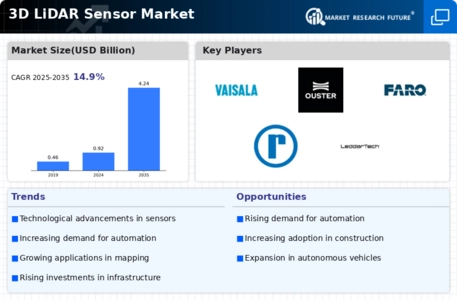
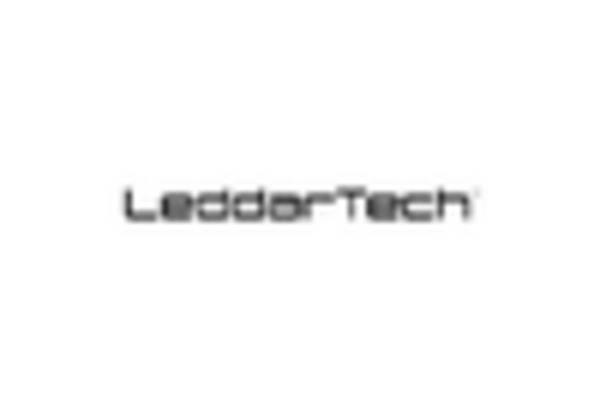
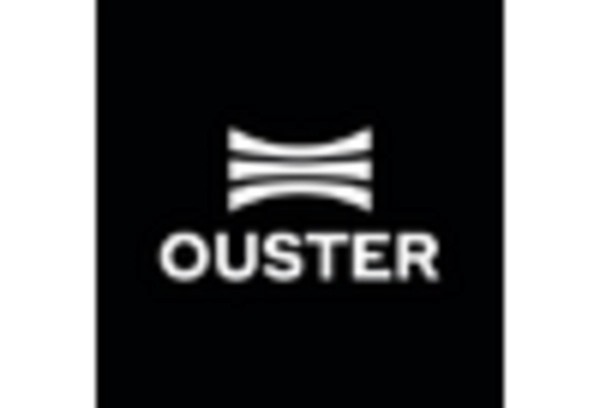
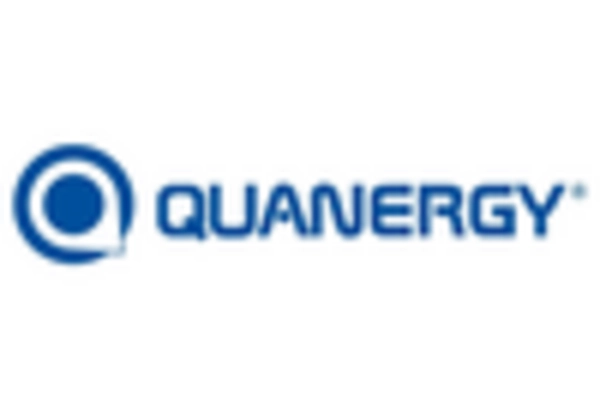
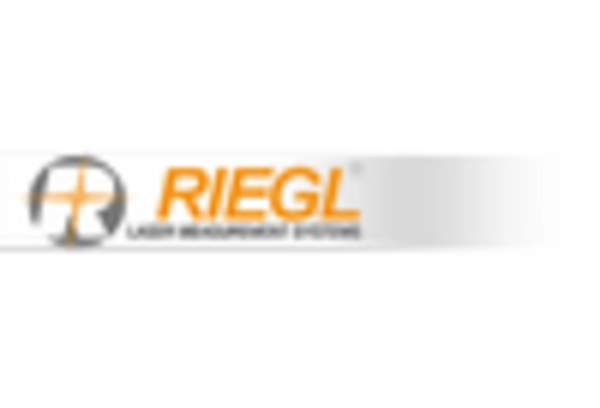
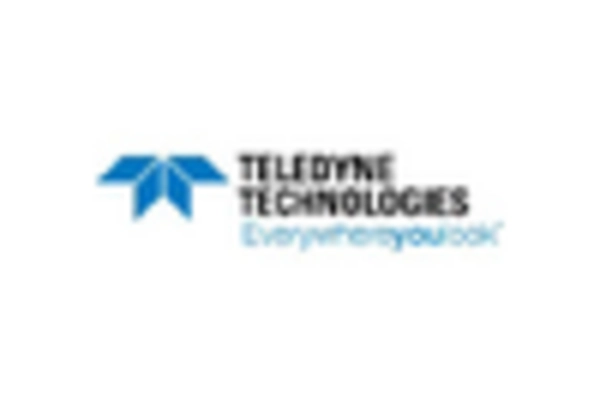
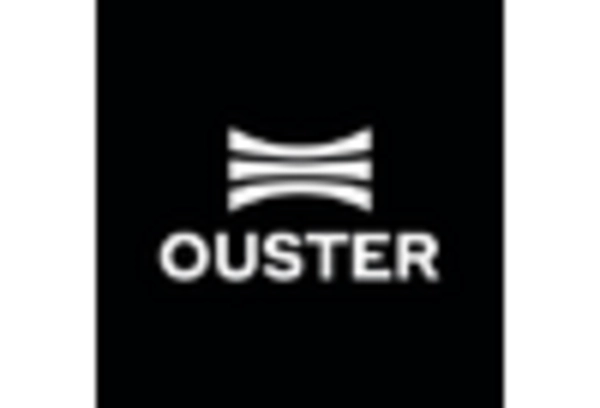

Leave a Comment